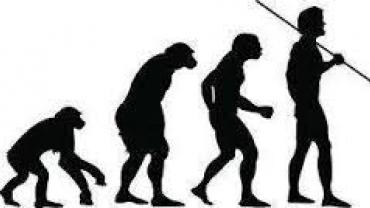
If you practice functional or complementary medicine you're probably familiar with the basics of a Paleo diet approach. You might recommend Paleo for to patients and perhaps you even follow it yourself. If so where do you fall in the spectrum? Are you 100% grain legume and dairy free? Or do you follow the 80/20 rule popularized in the Primal approach which includes dairy and leaves room for enjoying the occasional dark chocolate and red wine? Or are you even more relaxed than that sticking mostly to whole unprocessed foods but enjoying wheat sugary treats and a little taste of whatever catches your eye at weddings birthdays or perhaps just when you need a little pick-me-up at the end of a tough day now and then?
The Paleo concept is evolving no pun intended! While there were earlier proponents of this type of diet a 1985 paper marked the beginning of its regular appearance in the medical literature a presence that has exploded in recent years thanks to the popularity of Paleo among laypeople. Since then several variations on the basic tenets of the approach have been developed which may lead patients who are new to this type of diet to feel confused frustrated and ultimately give up on embarking on what is often a lifesaving dietary transformation.
You send your patients off with a recommendation for a book or two maybe even some websites and podcasts; and they're interested fantastic! Maybe they even find themselves wanting to do a little independent research so they delve a little deeper only to find themselves inundated with mixed messages: How much fruit is too much? What about “safe starches like rice potatoes and plantains? And how about pseudo-grains like buckwheat and quinoa? Faced with all of these questions what's a newbie to do?
With so many different approaches to this dietary strategy all of which regardless of the nuances are quite different from conventional medical and dietary recommendations of the last sixty year's helpful to focus more on what these nutritional paradigms have in common rather than what sets them apart.
While the earliest popular Paleo diets called for the complete elimination of all grains dairy and legumes some influential and well-respected individuals in the field have expanded their approach and shifted to what is better known as an ancestral health paradigm. This concept goes beyond the dietary restrictions of more traditional Paleo diets to include otherwise proscribed foods that were part of many cultures’ ancestral foodways such as long-soaked or fermented beans; tortillas and other products made from nixtamalized corn; unpasteurized and/or cultured dairy; and even small amounts of gluten grains usually in the form of long-fermented sourdough breads.
True Paleolithic diets were not necessarily low in total carbohydrates. They differ from modern diets in that their carbohydrate content came largely from vegetables fruits and occasional finds of honey rather than the grains and added sugars that make up such a large percentage of the modern Western diet. The glycemic effect of authentic Paleo foods would have been radically different especially when coupled with the micronutrient density of the whole unrefined foods that would have made up the totality of the diet. So while some estimates put carbohydrates at upwards of 65% of the total calories in some traditional hunter-gatherer diets many people currently suffering from metabolic syndrome and related conditionsdiabetes obesity hypertension dyslipidemia could likely benefit from a much lower carbohydrate intake at least at the beginning.
We can't be exactly sure what Paleolithic populations ate. How much starch precisely? How often did they stumble upon a honeycomb? Did they crack open an animal's bones and eat the marrow every time they had a kill? What was their exact omega-6 to omega-3 ratio
We do know however what they didn't eat. Even if grains made up some tiny portion of our Paleolithic ancestor's diets they weren't consumed in the form of popped and mechanically extruded sugary breakfast cereals or granola bars embalmed with corn syrup and drizzled with caramel. And their fruits were fresh and whole not canned in heavy syrup. Their fish wasn't battered and fried in hydrogenated cottonseed oil. The meat they ate came from animals consuming species-specific diets rather than biologically inappropriate rations created for economic expedience and quick fattening. Their fat sources would have been those that occurred naturally in animal tissue nuts and seeds rather than gallon jugs of oil isolated from corn and soybeans.
Some people are ready to jump head-first into a full-on grain legume and dairy-free trial of a Paleo diet and they should be encouraged to do so. But for those who are a bit skittish they'll be well on their way to a good start simply by avoiding some of the biggest nutritional insults of our modern times: refined vegetable oils copious amounts of refined grains added sugars and in general anything in a bag or box boasting a shelf life long enough to survive well past when people start digging up anthropological evidence of what we ate.